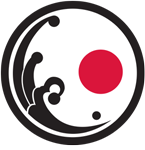Asian Arts Council Calendar - July 2025 - June 2026 - FY26
Lectures and Study Group meet on Zoom! (most of the time)
-
Lectures, and More
-
AAC members and Museum docents are sent links and enter for free. Please contribute to allow AAC to continue to host these outstanding speakers. Encourage friends to join in!
To register, find the date on the calendar of The San Diego Museum of Art. Click here! Once registered, an invitation email will be sent. -
Thursday, Oct 30 - 1:00 p.m.
Japan’s Manga Revolution: From Painted Scrolls to Comic Books
- DetailsStorytelling has always played an important role in Japanese visual arts. Over a thousand years ago, painted handscrolls began to appear in Japan that enhanced text with pictures. This tradition of interplay between word and image continued in the form of illustrated books and remains active today in modern manga comics. Coinciding with the release of my new book, “Japan's Manga Revolution,” this talk will provide an overview of Japanese illustrated books in premodern times. Covering subjects from poetry to celebrated beauties, famous kabuki actors to adventure tales. This survey ends with the birth of political cartoons in Japan in the early 20th century.
Andreas Marks oversees the renowned collection of Japanese and Korean art at the Minneapolis Institute of Art (Mia). He came to Mia from the Clark Center for Japanese Art and Culture, in California, where he was the director and chief curator for five years starting in 2008. Andreas has a PhD from Leiden University in the Netherlands and a master’s degree in East Asian Art History from the University of Bonn, Germany. With more than 20 years of experience in the field of Japanese art, Marks has curated more than 60 exhibitions at 38 institutions in the world, including the Birmingham Museum of Art; Detroit Institute of Arts; the Honolulu Museum of Art; San Antonio Museum of Art; and the Suntory Museum of Art, Tokyo, Japan, some of which have been reviewed in the Wall Street Journal and The New York Times. Marks has lectured at 43 institutions in the U.S., Europe, and Asia, and is an award-winning author of 24 books and countless essays about various aspects of Japanese art. In 2024, he was awarded the commendation of the Japanese Ministry of Foreign Affairs for his contributions to the promotion of Japanese culture.Andreas Marks, Ph.D., Oversees the renowned collection of Japanese and Korean Art at the Minneapolis Institute of Arts
-
Study Group
- Study Group Zoom meetings are FREE to AAC members and Museum Docents.
Join AAC!Theme for this year is "Asian Gardens and Architecture."
-
Next Study Group
Monday, Oct 20 - 10 a.m.Korean Gardens and Architecture

Sandi Calabough
-
Study Group Presentations - FY26
-
Monday, Sep 15, 2024 - 10 a.m.
Chinese Gardens
Lily Birmingham
-
Monday, October 20 - 10 a.m.
Korean Gardens and Architecture
Sandi Calabough
-
Monday, November 17 - 10 a.m.
Islamic Gardens
Almiede "Allie" Arnell
-
Monday, Feb 16, 2025 - 10 a.m.
Indonesian Architecture and Gardens
Chia-Hui Shih
-
Monday, Mar 16 - 10 a.m.
Zen Gardens
Ginna Olsen
-
Monday, Apr 20 - 10 a.m.
Japanese Temple Gardens
Susan Anderson
-
Monday, May 18 - 10 a.m.
Chinese Gardens in the U.S.
Bob Stein
-
Monday, Jun 15 - 10 a.m.
Indian Gardens and Architecture
Ravi Reddy
-
July and August - Summer break - no Study Group presentations
